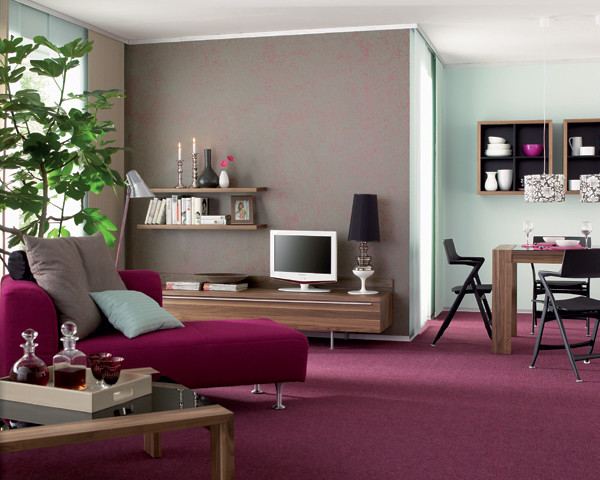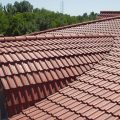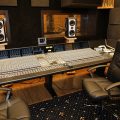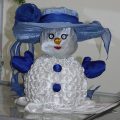Carpet emerged as a cheaper alternativetraditional carpet. But inexpensive does not mean bad. Let's try to figure it out. Regardless of the length and width, a traditional carpet can cover only part of the floor. That is, it cannot act as the main floor covering. And this is nothing more than additional costs. Carpet, on the contrary, implies laying from wall to wall, and, if necessary, directly on the subfloor. The only condition, which, however, is mandatory for all floor coverings without exception, is a flat, clean base without defects and cracks. In addition, carpet eliminates insufficient sound and heat insulation of the room. So, you must agree, this covering is not only democratic in price (130-3000 rubles/m2), but also more convenient. Another thing is that it is not always chosen correctly.
Types of carpet
 Carpets for homeFor installationWoven, flocked and tufted carpets are suitable for apartments and residential buildings. Woven Woven carpets are the least commonly used carpet coverings in residential premises. Their production is based on the traditional carpet weaving technology - the interlacing method. The raw material can be either wool or synthetic or blended fiber. The pile threads are intertwined with the weft and warp threads and woven together by hand or on special machines. Pros: Since the base is an integral part of the covering, it does not peel off even after its long-term use and repeated cleaning. Width: 2, 3 or 4 m. Manufacturers: In our country, you can find products from the Balta (Belgium), Brintons (Great Britain), Island Weavers (Philippines) factories. Prices: woven carpet is considered one of the most expensive - prices for it fluctuate between 450 and 3000 rubles / m. By the way, this is why it is not purchased very often. Flocked Flocked coverings are produced using the following technology. First, dense and thin threads are cut into thin strips. The pile height of 3 mm is set in a certain orientation in space using an electrostatic field, after which they are glued to a polyvinyl chloride base. Pros: the material is dense, silky to the touch. But the most important thing is that it is easy to clean, does not wear out for a long time and practically does not absorb water. That is why flocked carpet is allowed to be laid in wet areas where high humidity is inevitable. Manufacturers: perhaps the most famous of this type of covering is Flotex (international company Bonar Floors). Width: 1.5 or 2 m. Prices: about 1200 rubles / m. Tufted (needle-punched) The most popular type of carpet. A polypropylene or polyester mesh is usually used as a base, and synthetic, wool or blended fibers serve as yarns. The pile stitched through the primary base is secured with natural or synthetic glue, after which a secondary base is applied to the back of the product. Synthetic or natural jute, artificial felt, latex, dense fabric. Pros: the secondary base makes the carpet durable, flexible, and resistant to deformation. In addition to all of the above, latex makes the needle-punched material moisture resistant, which allows it to be used in wet areas. Manufacturers: DLW-Ural (Germany, Russia), Sintelon (Yugoslavia, Ukraine), Vinisin (Ukraine); Associated Weavers, Balta, Beaulieu International Group, Domo, ITC (Belgium); Timzo and Condor (Netherlands), Brintons. Width: usually 3 or 4 m, rarely 2 and 5 m. Prices: 140,800 rubles/m2. Modular carpet tiles Tufted carpet, like all other types of carpet, is a roll material. However, you can also find individual items on sale. These are modular carpet tiles cut from tufted carpet. The base for it is usually polymer bitumen, thanks to which the tile is durable and wear-resistant. Pros: minimal consumption during installation in rooms of complex shape; the ability to create almost any pattern using material of different colors; ease of replacement of damaged elements.
Carpets for homeFor installationWoven, flocked and tufted carpets are suitable for apartments and residential buildings. Woven Woven carpets are the least commonly used carpet coverings in residential premises. Their production is based on the traditional carpet weaving technology - the interlacing method. The raw material can be either wool or synthetic or blended fiber. The pile threads are intertwined with the weft and warp threads and woven together by hand or on special machines. Pros: Since the base is an integral part of the covering, it does not peel off even after its long-term use and repeated cleaning. Width: 2, 3 or 4 m. Manufacturers: In our country, you can find products from the Balta (Belgium), Brintons (Great Britain), Island Weavers (Philippines) factories. Prices: woven carpet is considered one of the most expensive - prices for it fluctuate between 450 and 3000 rubles / m. By the way, this is why it is not purchased very often. Flocked Flocked coverings are produced using the following technology. First, dense and thin threads are cut into thin strips. The pile height of 3 mm is set in a certain orientation in space using an electrostatic field, after which they are glued to a polyvinyl chloride base. Pros: the material is dense, silky to the touch. But the most important thing is that it is easy to clean, does not wear out for a long time and practically does not absorb water. That is why flocked carpet is allowed to be laid in wet areas where high humidity is inevitable. Manufacturers: perhaps the most famous of this type of covering is Flotex (international company Bonar Floors). Width: 1.5 or 2 m. Prices: about 1200 rubles / m. Tufted (needle-punched) The most popular type of carpet. A polypropylene or polyester mesh is usually used as a base, and synthetic, wool or blended fibers serve as yarns. The pile stitched through the primary base is secured with natural or synthetic glue, after which a secondary base is applied to the back of the product. Synthetic or natural jute, artificial felt, latex, dense fabric. Pros: the secondary base makes the carpet durable, flexible, and resistant to deformation. In addition to all of the above, latex makes the needle-punched material moisture resistant, which allows it to be used in wet areas. Manufacturers: DLW-Ural (Germany, Russia), Sintelon (Yugoslavia, Ukraine), Vinisin (Ukraine); Associated Weavers, Balta, Beaulieu International Group, Domo, ITC (Belgium); Timzo and Condor (Netherlands), Brintons. Width: usually 3 or 4 m, rarely 2 and 5 m. Prices: 140,800 rubles/m2. Modular carpet tiles Tufted carpet, like all other types of carpet, is a roll material. However, you can also find individual items on sale. These are modular carpet tiles cut from tufted carpet. The base for it is usually polymer bitumen, thanks to which the tile is durable and wear-resistant. Pros: minimal consumption during installation in rooms of complex shape; the ability to create almost any pattern using material of different colors; ease of replacement of damaged elements.









